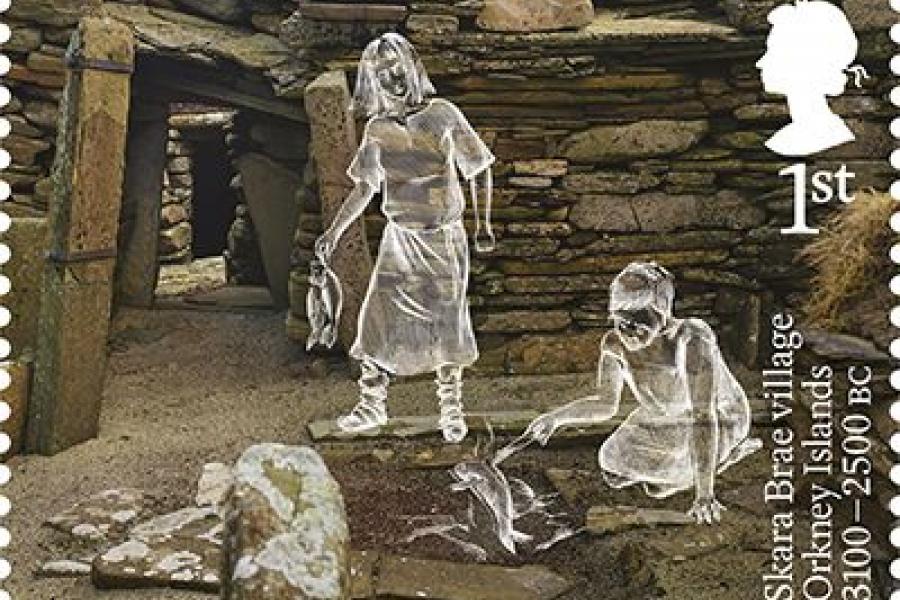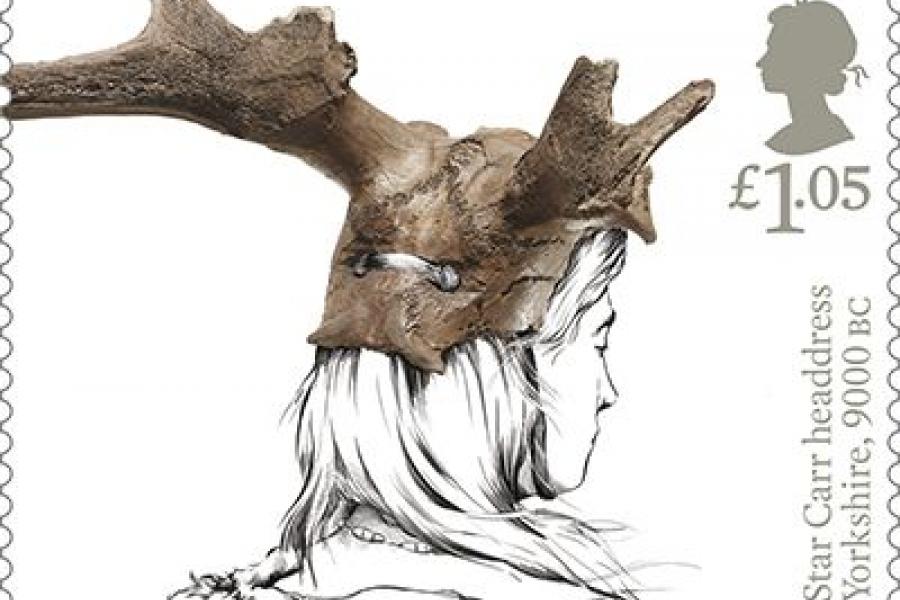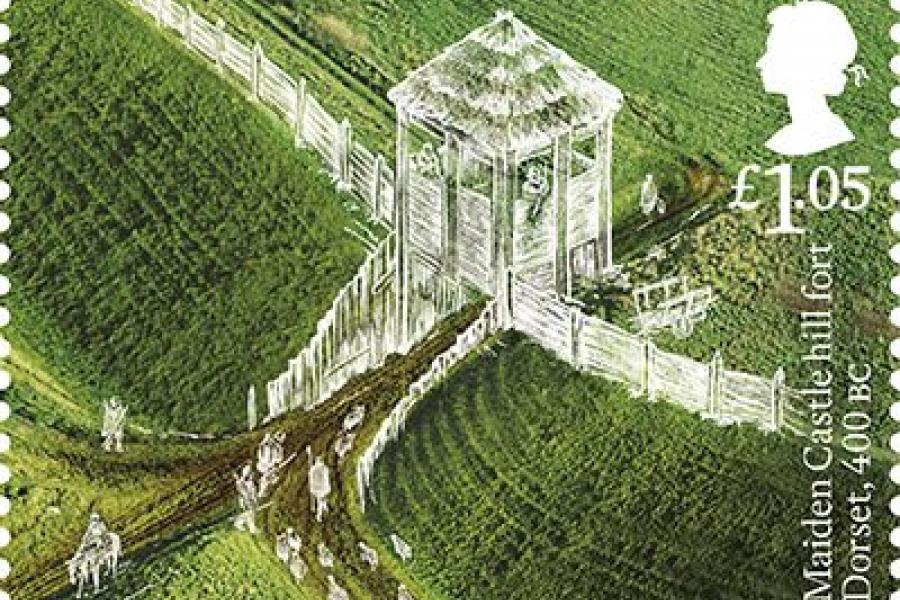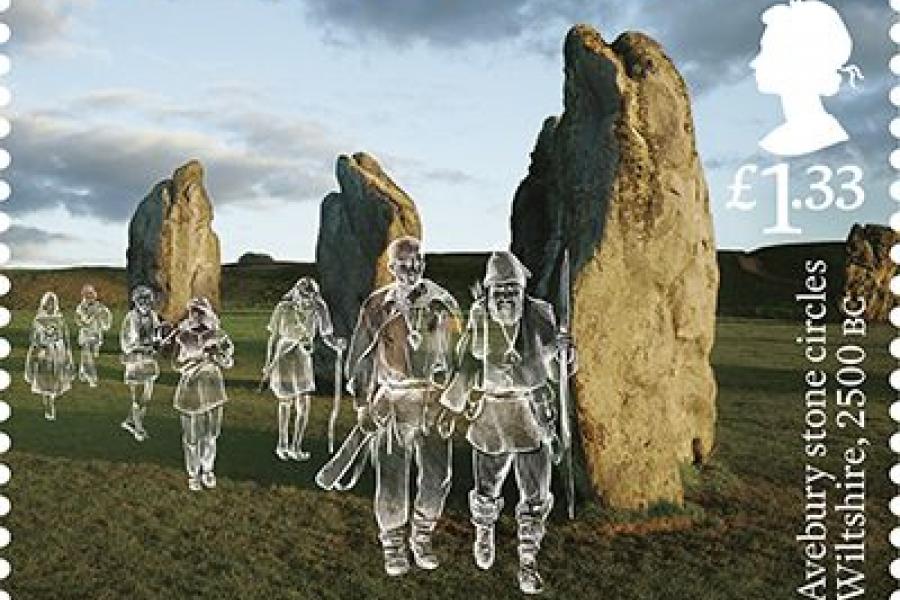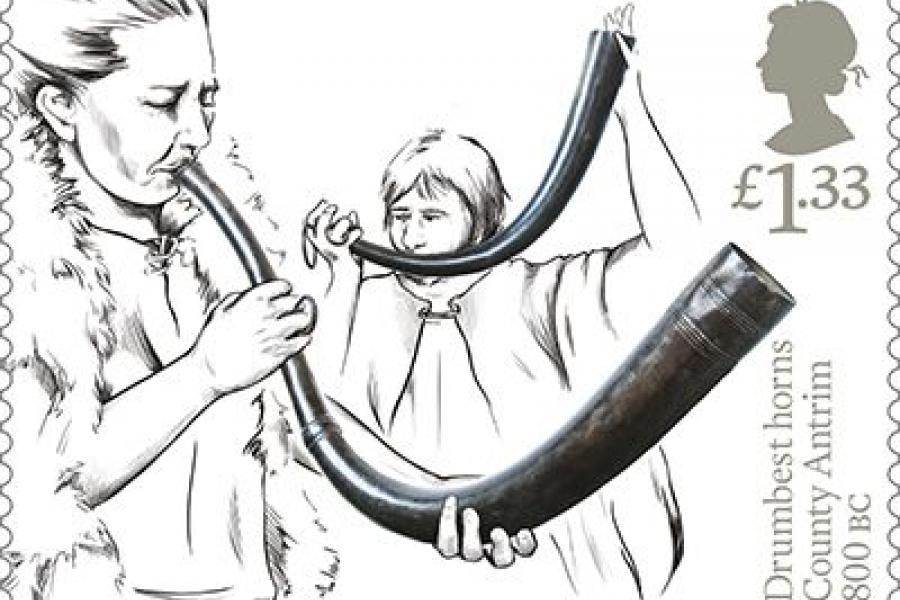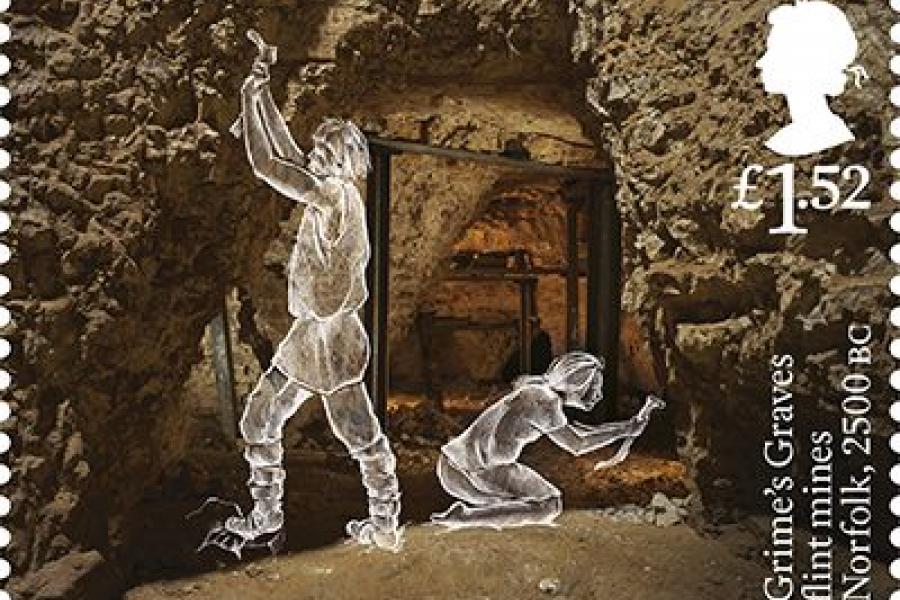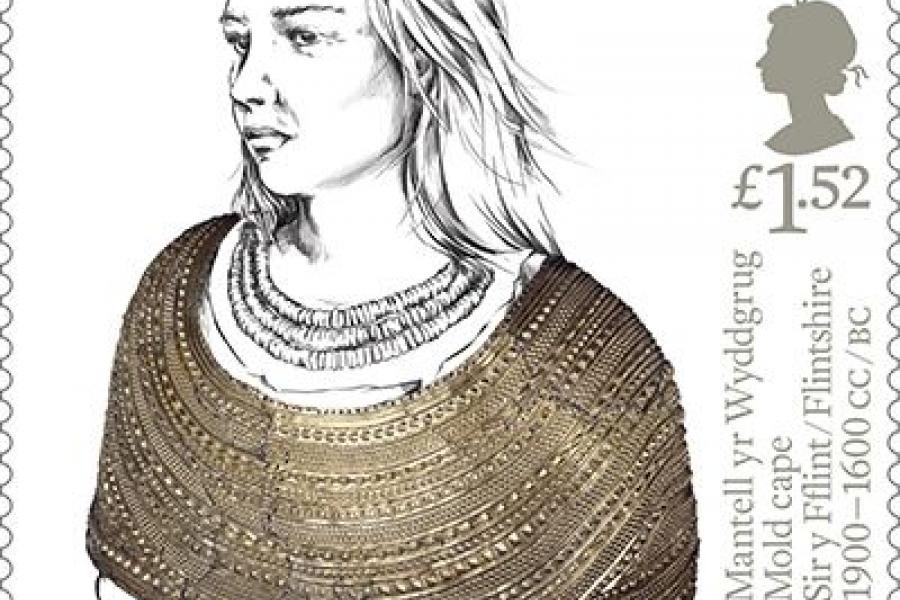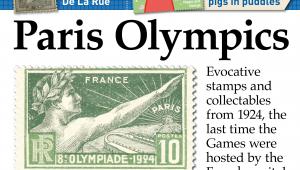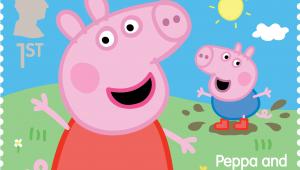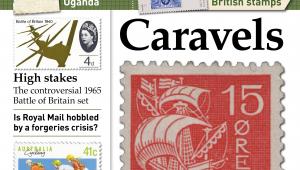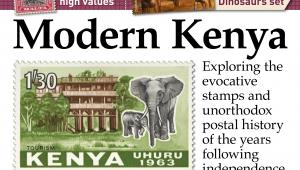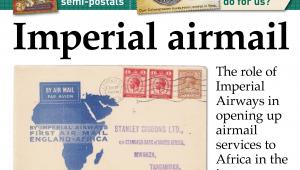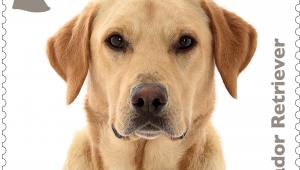Ancient Britain
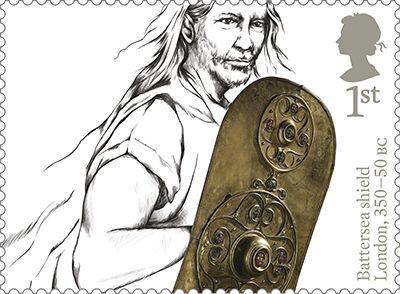
The Ancient Britain set, to be issued by Royal Mail on January 17, comprises eight stamps depicting four important sites and four exceptional artefacts from prehistoric times.
Photographs of the locations and the objects are overlaid with black or white illustrations to bring them to life, suggesting how ancient people probably worked in them and used them.
Overall, the set spans almost 10,000 years of history, from the late Stone Age (also known as Neolithic) period, through the Bronze Age and the Iron Age, to the time when the Romans made their first incursion into Britain.
The designs are not presented in a timeline, however, but in horizontal se-tenant pairs which are in no chronological order.
Designed by True North, from illustrations by Rebecca Strickson, they are printed in litho by International Security Printers.
1st class BATTERSEA SHIELD, LONDON, 350-50BC
Found in the riverbed in the 1850s, this metal face of an Iron Age shield (which would originally have had wooden backing) was made using four sheets of bronze and three circular decorative panels in Celtic style.
1st class SKARA BRAE VILLAGE, ORKNEY ISLANDS, 3100-2500BC
This well-preserved stone-built settlement of eight houses in a cluster, with sophisticated furnishings and facilities, is the most complete Neolithic village in Europe, and a UNESCO World Heritage Site.
£1.05 STAR CARR HEADDRESS, YORKSHIRE, 9000BC
Excavations of Mesolithic remains revealed the skulls and antlers of red deer which have been extensively worked, possibly for use as a disguise when hunting or perhaps as ceremonial masks or headdresses.
£1.05 MAIDEN CASTLE HILL FORT, DORSET, 400BC
The largest hill fort of its type in Britain, occupied over a period spanning four millennia, had three concentric earthwork ramparts which would have been topped by wooden gate-towers and palisades for an impressive show of strength.
£1.33 AVEBURY STONE CIRCLES, WILTSHIRE, 2500BC
Britain’s largest prehistoric ceremonial monument, originally with more than 150 standing stones arranged in three circles, was probably used for Neolithic religious rituals.
£1.33 DRUMBEST HORNS, CO ANTRIM, 800BC
Found in an Irish bog in 1840 were four cast bronze horns, two end-blown to provide a melody and two side-blown for a backing drone. Capable of deep resonating sounds, they might have been use in Bronze Age ritual or battle.
£1.52 GRIME’S GRAVES FLINT MINES, NORFOLK, 2500BC
More than 500 shafts dug into chalkland terrain were used in Neolithic times to extract high-grade flint for making sharp-edged tools and weapons. Some of the shafts are up to 14m (46ft) deep, with radiating galleries following seams of flint.
£1.52 MOLD CAPE, FLINTSHIRE, 1900-1600BC
Discovered at a Bronze Age burial site in 1833 was the upper part of an elaborate garment made of hammered gold, with exceptional craftsmanship which mimics strings of beads and folds of cloth.
OTHER PRODUCTS
Written by Timothy Darvill, Professor of Archaeology at Bournemouth University, the presentation pack provides an overview of the prehistory of Britain, along with details about each of the ancient sites and artefacts depicted on the stamps. Stamp cards are available as usual.
PRICES
Set of 8 stamps £9.08
Presentation pack £9.60
Stamp cards £3.60
First day cover £11.32
VERDICT
COMMEMORATIVE WORTH 4/5
A rare nod towards Britain’s ancient heritage is welcome, and the sites and objects deserve our attention
QUALITY OF DESIGN 4/5
Superimposing people onto empty images is a clever approach, bringing prehistory to life
WOW FACTOR 2/5
Neolithic culture has a hard time competing with popular culture, so will this set make much impact on non-philatelists?

